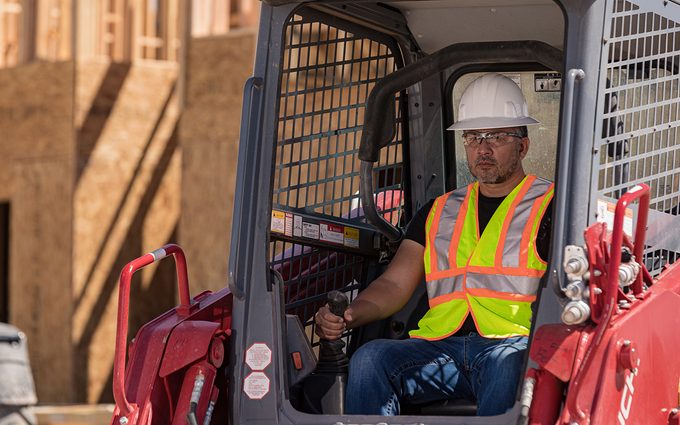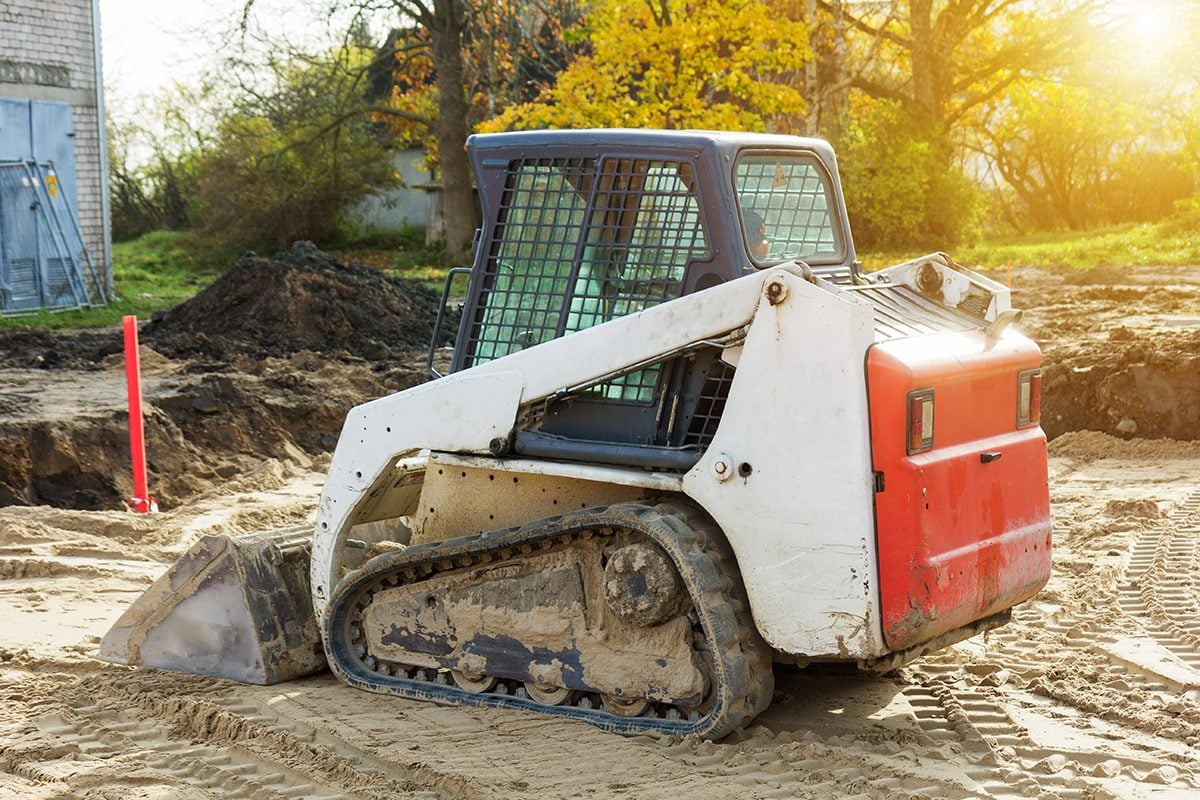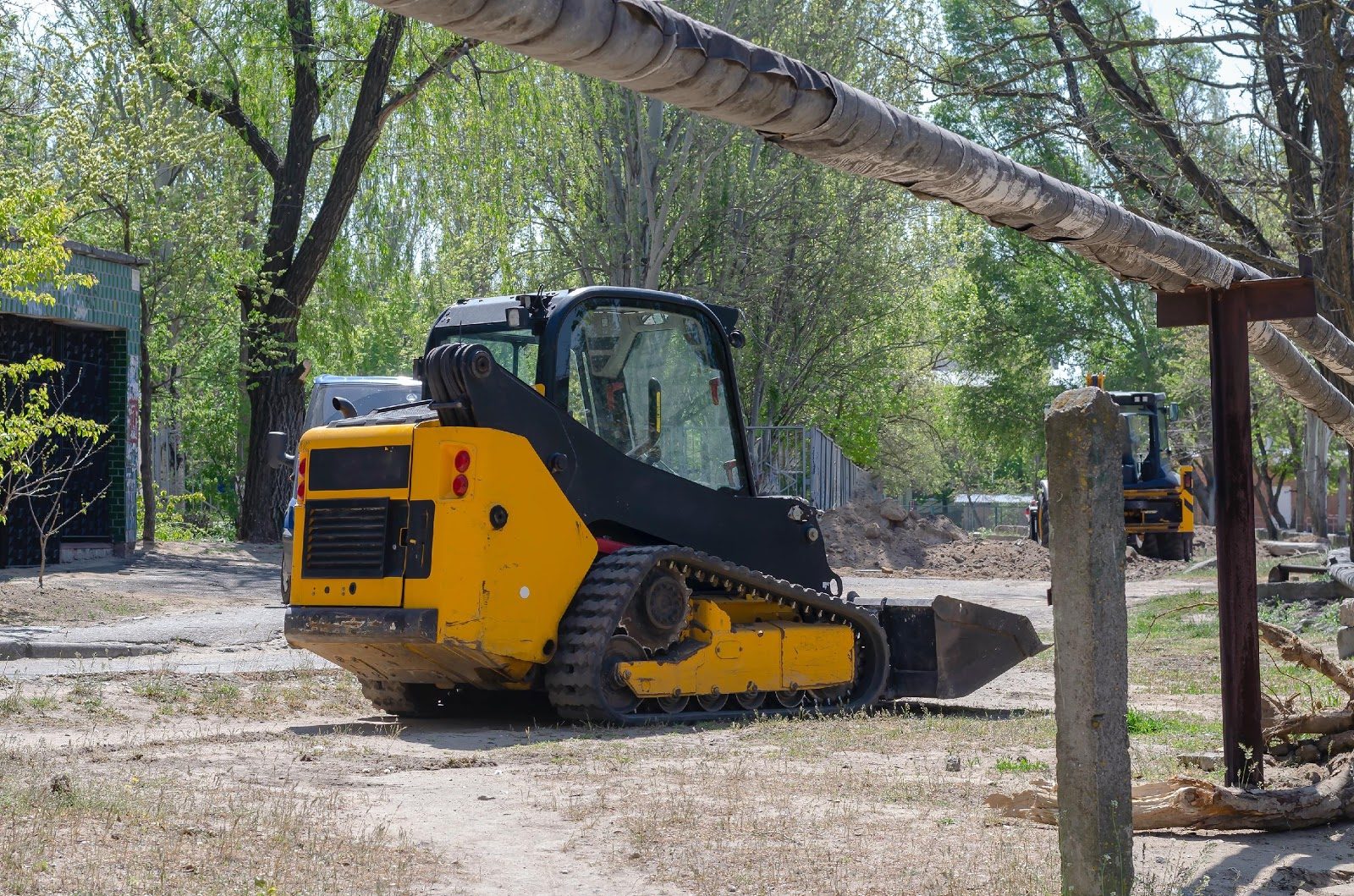By Josh Nickell, Vice President, Equipment Segment, American Rental Association

Renting the Right Equipment
Rental equipment options are vast. When you need to find a local rental store with the right equipment for your project, the American Rental Association (ARA) has a website that can help: RentalHQ. There you can find local rental stores as well as tips and information on common rental equipment.
While it’s always good to have an idea of the equipment you’ll need, it’s even better to talk through what you’re looking to accomplish with the professionals at your local rental store. Why? Because there might be better equipment for the job, attachments you don’t know about, delivery considerations, and more. Talking through the project and tapping into their expertise can help you discover important information.

For instance, the Getaway project required a compact track loader (CTL). However, many people might call their rental store, schedule a skid steer rental to be delivered and end up stuck in the mud. Why? While CTLs and skid steers are similar in so many ways, there is one distinct difference. A skid steer has wheels while a CTL has tracks, making it better suited for site work in wet or soft ground conditions.
5 Tips When Renting Equipment
- Schedule your rental as early as possible for a wider selection of equipment choices and delivery times and plan when you’ll need what. If you’re renting a CTL, determine if it makes sense to rent the various attachments you’ll be using all at once or if you should rent them as you go.
- Take care of the equipment. For example, CTLs require a daily walk-around before starting the machine to minimize wear and operate best. This includes clearing debris and checking for maintenance needs. It’s a quick daily task that makes a big difference in the long run. Heed warnings and address error messages, by proceeding without addressing any problems you may be responsible for any damage that results, and it may be a simple fix by calling the rental store. By caring for rental items, renters help keep costs down for everyone. As part of the sharing economy, rental spreads the cost for the item and maintenance across all renters. So the more use the equipment gets, the better it is for all.
- Look into your insurance coverage to determine if equipment rental will be covered or if you should sign up for a damage waiver or protection plan from the rental company.
- Take photos of the equipment when you receive it and when you return it. This can help prevent damage disputes.
- If you have a question, ask it. Some great questions to ask include:
-
- Are there any additional rental items I’ll need to operate the items on the list?
- Are there rental items you think I should consider that we haven’t talked about?
- What additional costs can I expect?

Common Costs and How to Control Them
Rental is a great way to control your costs. You’ll have a good idea up front of what your equipment or tool rental will cost when you sign your agreement. Be sure to know and calculate for the following to have the most accurate picture of your costs.
- Rental period. To get accurate estimates, be as accurate as possible about your expected rental period. Talk through different options with your local rental store, including if discounts are offered for returning equipment early. By planning equipment use, you can optimize based on rental rates that fall into three categories.
- The day rate is for a 24-hour period.
- The week rate is generally 3-3.5 times the cost of a day rate. If you will be keeping the equipment for three or three and a half days, it will often cost nothing additional to keep it for a full week.
- The month rate is usually 2-2.5 times the cost of a week rate and is based on a four-week, or 28-day, timeline rather than the number of days in that particular month. Once you have the equipment for approximately 2.5 weeks it costs you no additional money to keep it until you reach the 28-day mark.
- Attachments and accessories. While some accessories and attachments are included in the rental, others may require an additional fee. Most CTL rentals will include one attachment, usually a bucket or pallet forks, but there are many more attachments to choose from that would be rented separately. A CTL can be a robust multitool with attachments including augers, grapple brushes, land levelers, backhoes, brush cutters, compactors, breakers, rakes, snow blowers, snowplows, stump grinders, tillers, trenchers and more. Also keep in mind there may also be other requirements for the attachments, for example, a CTL auger attachment will need an auger drive, so ask if anything else is needed.
- Delivery and pick up. Determine how you’ll get the equipment to and from your site. If the rental store will be delivering, go over the details to determine how many deliveries will be needed and that all the equipment is accounted for in the estimates.
- Damage waivers and protection plans. Minimize unexpected costs with damage waivers or protection plans through the rental store, which cover accidental damage. Not included is damage due to abuse, misuse, or negligence.
- Fuel. Be sure to use the correct fuel for the equipment. Most compact equipment requires diesel fuel. Return equipment at or above the fuel level when you received the equipment. In most cases this will be a full tank. This helps avoid additional refueling fees.
- Environmental fee. Depending on the equipment you are renting, some rental stores will charge an environmental fee to cover costs associated with washing and waste disposal.
- State and local tax. Be sure to ask what tax rates apply to your rental.
Equipment rental makes dreams like the Getaway project possible. It allows for grander ideas and smaller budgets as you unleash your imagination. To find a rental partner near you, visit RentalHQ.com.
About ARA: (www.ARArental.org) The American Rental Association, Moline, Ill., is an international trade association for owners of equipment and event rental businesses and the manufacturers and suppliers of construction/industrial, general tool and party/event rental equipment. ARA members, which include more than 11,000 rental businesses and more than 1,000 manufacturers and suppliers, are located in every U.S. state, every Canadian province and more than 40 countries worldwide. Founded in 1955, ARA is the source for information, advocacy, education, networking and marketplace opportunities for the equipment and event rental industry throughout the world.
About Josh Nickell
Nickell, a 20-year rental industry veteran, has spent a good portion of his life in a family rental business as a third-generation owner. His experience also includes working for a national rental company, an international rental software provider and serving the industry in a consulting capacity. Through decades of experience, he has gained unique perspective and knowledge of the construction, industrial and general tool rental industry. Nickel is Vice President, Equipment Segment and leads program development and member engagement for the equipment segment of ARA membership.
